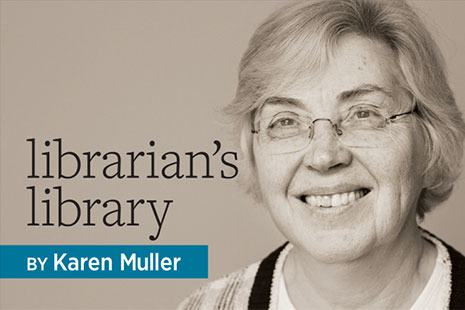
Ray Bradbury wrote Fahrenheit 451 in the basement of UCLA’s Powell Library in a famously short period of time. Betty Friedan wrote The Feminine Mystique over a two-year period in the New York Public Library’s Frederick Lewis Allen Room. Katherine Hall Page dedicated The Body in the Sleigh to librarians who helped her be sure of her details. Some of us may have been recognized by researchers when their scholarly books were published. This roundup gathers titles on the ways libraries support writers, who in turn are among the heaviest library users.
 Librarians work with students at an early age to teach the importance of documenting sources and not plagiarizing others’ work. Teaching Plagiarism Prevention to College Students: An Ethics-Based Approach, by Connie Strittmatter and Virginia K. Bratton, presents a model to address intentional plagiarism. This model does not address how to cite properly but rather seeks to change students’ understanding of why plagiarism and cheating is unethical. After presenting the principles, the authors offer guidance in developing a curriculum for instruction, as well as ways to evaluate its efficacy after the course is complete. Rowman and Littlefield, 2016. 158 P. $75. 978-1-4422-6440-3. (Also available as an ebook.)
Librarians work with students at an early age to teach the importance of documenting sources and not plagiarizing others’ work. Teaching Plagiarism Prevention to College Students: An Ethics-Based Approach, by Connie Strittmatter and Virginia K. Bratton, presents a model to address intentional plagiarism. This model does not address how to cite properly but rather seeks to change students’ understanding of why plagiarism and cheating is unethical. After presenting the principles, the authors offer guidance in developing a curriculum for instruction, as well as ways to evaluate its efficacy after the course is complete. Rowman and Littlefield, 2016. 158 P. $75. 978-1-4422-6440-3. (Also available as an ebook.)
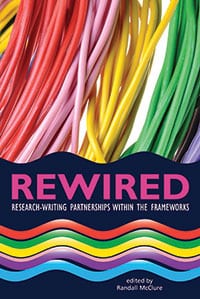 In Rewired: Research–Writing Partnerships within the Frameworks, Randall McClure has gathered essays on putting writing instruction and information literacy together. First there is the partnership between academic librarians and colleagues in academic departments across campuses, or even off campus in service settings, working to build skills for writing in the digital age. Next is the partnership, or congruence, of two documents, the Association of College and Research Libraries’s (ACRL) Framework for Information Literacy for Higher Education and Framework for Success in Postsecondary Writing, from the Council of Writing Program Administrators, National Council of Teachers of English. The third partnership is the iterative, or “braided,” relationship between writing and research. The 14 essays are grouped in three themes based on individual authors’ experiences. The largest section covers modeling the partnerships, integrating the concepts into course offerings, teaching the frameworks, and developing blended instructional models. Finally, there are three essays on program assessment. ACRL, 2016. 330 P. $68. PBK. 978-0-8389-8904-3. (Also available as an ebook.)
In Rewired: Research–Writing Partnerships within the Frameworks, Randall McClure has gathered essays on putting writing instruction and information literacy together. First there is the partnership between academic librarians and colleagues in academic departments across campuses, or even off campus in service settings, working to build skills for writing in the digital age. Next is the partnership, or congruence, of two documents, the Association of College and Research Libraries’s (ACRL) Framework for Information Literacy for Higher Education and Framework for Success in Postsecondary Writing, from the Council of Writing Program Administrators, National Council of Teachers of English. The third partnership is the iterative, or “braided,” relationship between writing and research. The 14 essays are grouped in three themes based on individual authors’ experiences. The largest section covers modeling the partnerships, integrating the concepts into course offerings, teaching the frameworks, and developing blended instructional models. Finally, there are three essays on program assessment. ACRL, 2016. 330 P. $68. PBK. 978-0-8389-8904-3. (Also available as an ebook.)
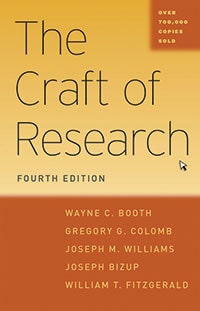 Less scholarly and more practical, and intended for the library user, is The Craft of Research, by Wayne C. Booth, Gregory G. Colomb, and Joseph M. Williams, and expanded for this fourth edition by Joseph Bizup and William T. Fitzgerald. The authors contend that anyone can—and should—be a researcher, that the skills will help a person be a better reader who is critical of the facts presented and of the arguments being made. They then present the process of going from a question to a finished report. They offer tips on using a library, evaluating resources, pursuing sources, and preparing and annotating a bibliography. The middle section of the guide is about using the findings to make a cogent argument, ensuring that reasoning can be supported, and looking at the findings and arguments from the reader’s viewpoint to be sure it holds up. The user perspective continues with the writing phase—including drafting editions, documenting, presentation, and the all-important critical read from an external reader—then rewriting. University of Chicago Press, 2016. 336 P. $45. 978-0-2262-3956-9. (Also available as an ebook.)
Less scholarly and more practical, and intended for the library user, is The Craft of Research, by Wayne C. Booth, Gregory G. Colomb, and Joseph M. Williams, and expanded for this fourth edition by Joseph Bizup and William T. Fitzgerald. The authors contend that anyone can—and should—be a researcher, that the skills will help a person be a better reader who is critical of the facts presented and of the arguments being made. They then present the process of going from a question to a finished report. They offer tips on using a library, evaluating resources, pursuing sources, and preparing and annotating a bibliography. The middle section of the guide is about using the findings to make a cogent argument, ensuring that reasoning can be supported, and looking at the findings and arguments from the reader’s viewpoint to be sure it holds up. The user perspective continues with the writing phase—including drafting editions, documenting, presentation, and the all-important critical read from an external reader—then rewriting. University of Chicago Press, 2016. 336 P. $45. 978-0-2262-3956-9. (Also available as an ebook.)
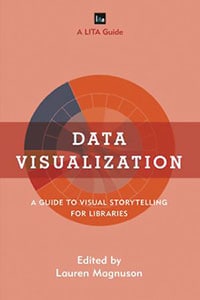 The authors of The Craft of Research address only traditional ways of presenting data in print. Data Visualization: A Guide to Visual Storytelling for Libraries, edited by Lauren Magnuson, offers a range of alternative methods. Although it is intended for administrative advocacy use, the concepts explored can be used by writers and researchers, particularly those whose work is created digitally and will remain digital. The essays begin with core principles of data preparation for visualization. Several chapters then cover specific technical applications to display the data, with numerous case studies and examples. The last two chapters address integrating data visualization into information literacy and using infographics to teach data literacy. Rowman and Littlefield, 2016. 248 P. $95. 978-1-4422-7110-4. (Also available as an ebook.)
The authors of The Craft of Research address only traditional ways of presenting data in print. Data Visualization: A Guide to Visual Storytelling for Libraries, edited by Lauren Magnuson, offers a range of alternative methods. Although it is intended for administrative advocacy use, the concepts explored can be used by writers and researchers, particularly those whose work is created digitally and will remain digital. The essays begin with core principles of data preparation for visualization. Several chapters then cover specific technical applications to display the data, with numerous case studies and examples. The last two chapters address integrating data visualization into information literacy and using infographics to teach data literacy. Rowman and Littlefield, 2016. 248 P. $95. 978-1-4422-7110-4. (Also available as an ebook.)
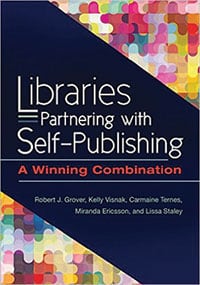 Libraries Partnering with Self-Publishing: A Winning Combination, by Robert J. Grover, Kelly Visnak, Carmaine Ternes, Miranda Ericsson, and Lissa Staley, is written to aid librarians as they support library users who self-publish their work. The authors cover how publishing is changing, particularly how the lines have blurred between information consumers and information producers, contrasting traditional book publishing with self-publishing. Other chapters cover library services that support authors, ways to use social media for promotion, and open access. Libraries Unlimited, 2016. 154 P. $65. PBK. 978-1-4408-4158-3. (Also available as an ebook.)
Libraries Partnering with Self-Publishing: A Winning Combination, by Robert J. Grover, Kelly Visnak, Carmaine Ternes, Miranda Ericsson, and Lissa Staley, is written to aid librarians as they support library users who self-publish their work. The authors cover how publishing is changing, particularly how the lines have blurred between information consumers and information producers, contrasting traditional book publishing with self-publishing. Other chapters cover library services that support authors, ways to use social media for promotion, and open access. Libraries Unlimited, 2016. 154 P. $65. PBK. 978-1-4408-4158-3. (Also available as an ebook.)
 Literary Publishing in the Twenty-First Century, edited by Travis Kurowski, Wayne Miller, and Kevin Prufer, is a collection of essays on contemporary publishing from the perspectives of literary journals, small presses, major publishing houses, international journals, critics, digital publishers, and literary agents. The book looks at facets of the shifting landscape, considering a recent conundrum that finds the number of graduates with MFAs in creative writing increasing as the number of people who read books declines. The essays are a pleasure to read, but the landscape they describe may already have changed. Twenty-first century publishing is a fast-changing environment, and one libraries must try to understand. Milkweed, 2016. 312 P. $20. PBK. 978-1-5713-1354-6. (Also available as an ebook.)
Literary Publishing in the Twenty-First Century, edited by Travis Kurowski, Wayne Miller, and Kevin Prufer, is a collection of essays on contemporary publishing from the perspectives of literary journals, small presses, major publishing houses, international journals, critics, digital publishers, and literary agents. The book looks at facets of the shifting landscape, considering a recent conundrum that finds the number of graduates with MFAs in creative writing increasing as the number of people who read books declines. The essays are a pleasure to read, but the landscape they describe may already have changed. Twenty-first century publishing is a fast-changing environment, and one libraries must try to understand. Milkweed, 2016. 312 P. $20. PBK. 978-1-5713-1354-6. (Also available as an ebook.)

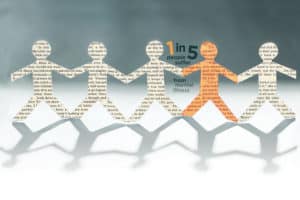

I have always used online writers to do research paper writing work. These online writers first research the topic and collect the best facts and resources and then write it by following the best writing style. They also provide you the best writing tips.